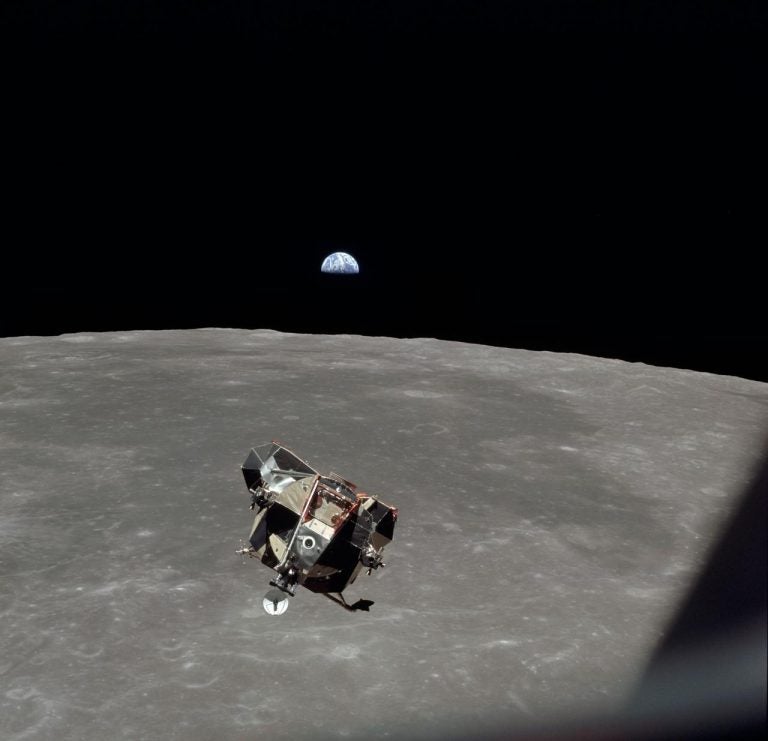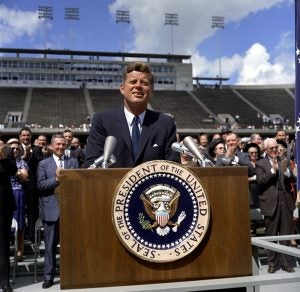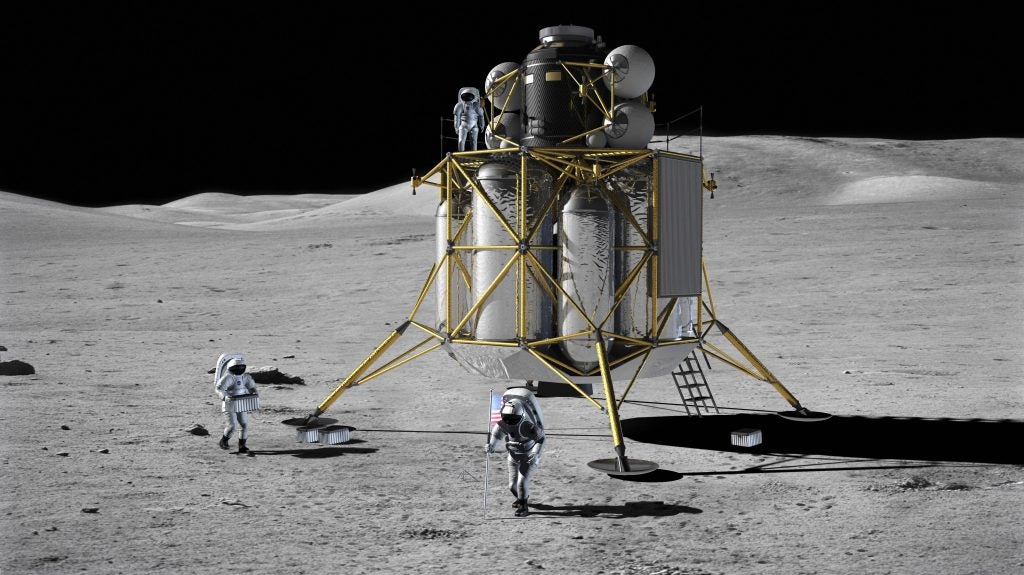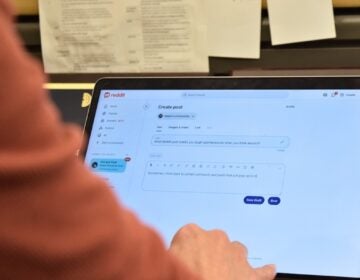Why haven’t we gone back to the moon?
Short answer: money
Listen 11:34
The Apollo 11 Lunar Module ascent stage in lunar orbit in 1969 with with astronauts Neil Armstrong and Buzz Aldrin aboard. The Earth rises above the lunar horizon. (Photo credit: NASA)
This story is from The Pulse, a weekly health and science podcast.
Subscribe on Apple Podcasts, Spotify or wherever you get your podcasts.
To this day, people wonder: If we went to the moon in the 1960s, why is it taking so long to go back?
Earlier this year, at a meeting of the National Space Council, Vice President Mike Pence said it was “not good enough” that NASA told him it would take till 2028 to return to the moon.
“We don’t have the political will that provides the money to do it,” is the short answer, said Casey Dreier, senior space-policy adviser, chief advocate, and biggest space fan at the Planetary Society, a nonprofit that promotes space science and exploration.
“It’s also really important to remember why Apollo happened in the first place wasn’t because of some idealistic, soaring vision of exploration,” Dreier added.
President John F. Kennedy did not spend $5.4 billion in 1960s money — what amounts to more than $45 billion today — because he cared about space.
“The only reason he committed the resources to Apollo that he did was that he saw Apollo as a front in the Cold War,” Dreier said.

The big spending boost NASA got went away not long after Neil Armstrong and the other astronauts returned to Earth. President Richard Nixon welcomed Armstrong and the Apollo 11 crew back in 1969, and there were six more Apollo missions. But by the very next year, in 1970, Nixon cut NASA’s budget by hundreds of millions of dollars and said it was no longer a special program. Like any other part of government, human space flight would have to compete for resources.
That’s why Poppy Northcutt, who worked at Mission Control during the Apollo program, called it a pleasant memory, but also sad and bittersweet. NASA already had plans for more ambitious missions to the moon and Mars, she said, and she wishes they could have done those too.
“In Congress’ mind, and perhaps in the public mind as well, they viewed it as a race, a race with the Russians, and once the race with the Russians was won … there was not anything more to do,” Northcutt said.
NASA’s budget remained low for decades. The agency’s crewed space missions stayed in low earth orbit ever since, about one-thousandth of the way to the moon — like going a few blocks rather than traveling across the country.
Then in 2003, the space shuttle Columbia broke apart above the earth’s atmosphere, killing the seven crew members. Dreier said the disaster made the White House and Congress reflect: Why do we send humans into space? Why are they risking their lives?
After that massive setback, President George W. Bush came up with a bold new mission for NASA, perhaps with the thought that if lives are going to be put at risk with space exploration, we might as well shoot for the moon. The goal: return to the moon by 2020, live and work on the lunar surface, then go to Mars and other planets. NASA called the program Constellation.
Then-NASA Administrator Michael Griffin called it “Apollo on steroids.”
NASA got to work on a bigger rocket, a lunar lander three times larger than the one for the Apollo missions. The Eagle was on the moon for a few hours. This one would stay a full week.

In 2008, Eugene Cernan, the last astronaut to walk on the moon, visited the Johnson Space Center in Houston. NASA was already in the last stage of the design process for the lunar lander. Kathy Laurini, project manager, remembers Cernan telling her team to add something that would make being in space a little more pleasant for the astronauts:
“When you’re on these missions, you’re far away from earth, and you’re roughing it up, you don’t have a great place to sleep, it’s hard to go to the bathroom … what would really have been nice is to be able to wake up in the morning and have a nice hot cup of coffee,” Laurini said.
Subscribe to The Pulse
So it came as a total shock when the Obama administration canceled Constellation in 2010. Charles Bolden, the NASA administrator at the time, described it as “a death in the family.”
Some space analysts, to this day, say Obama “ruined space exploration” and “expressed an antipathy to American exceptionalism.” But Dreier noted that Obama inherited the program from George W. Bush, who promised an Apollo-sized program but could not pair it with Apollo-sized funding.
“The political support for that initiative never really materialized. And by the time the Obama administration came in, they were looking at a program that was billions of dollars over budget, years behind schedule, and it was unclear what level of success they could expect out of that and win.”
After Constellation, Dreier said NASA got smart and decided to build something that would work, more or less, no matter where the next president wanted to go: a big rocket and a crew capsule that could stay in space.
“You can send it to the moon, you can probably send it to an asteroid, maybe through some modifications, you can send things to Mars, but you don’t need to start over every four years,” he said.
There’s also something NASA doesn’t like to talk about because it removes the romance of space travel: the space program is a giant job-creation program.
NASA shouldn’t be shy about it, Dreier said — it’s part of the big picture, and it’s how space exploration gets paid for.

“NASA is one of the purest expressions of human curiosity that we see in the entire world,” Dreier said. “What other government agency has fans like this? You don’t see the Department of Agriculture having people call themselves agriculture fanatics.”
People buy NASA T-shirts, pins and hats because space exploration is cool. That’s why we make movie after movie about the astronauts, the gripping human drama, life and death stakes, but we don’t watch movies about the politics of paying for it.
WHYY is your source for fact-based, in-depth journalism and information. As a nonprofit organization, we rely on financial support from readers like you. Please give today.







